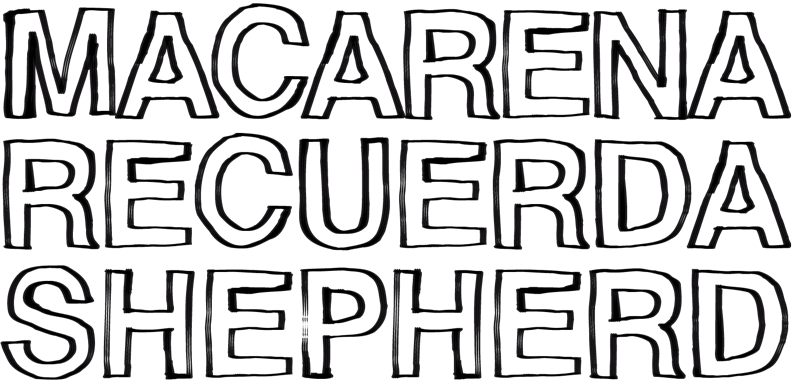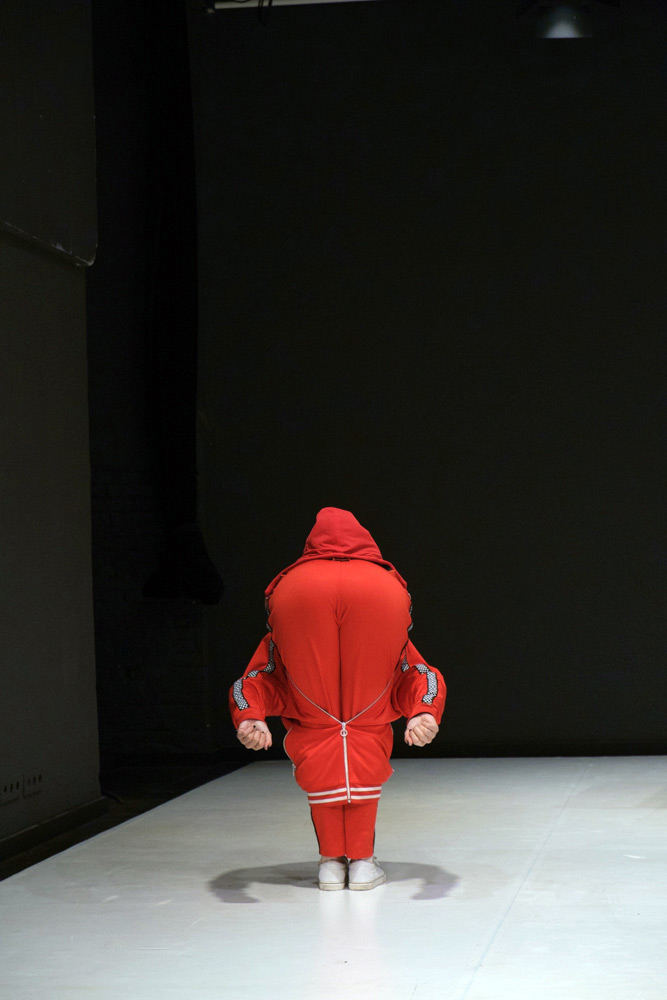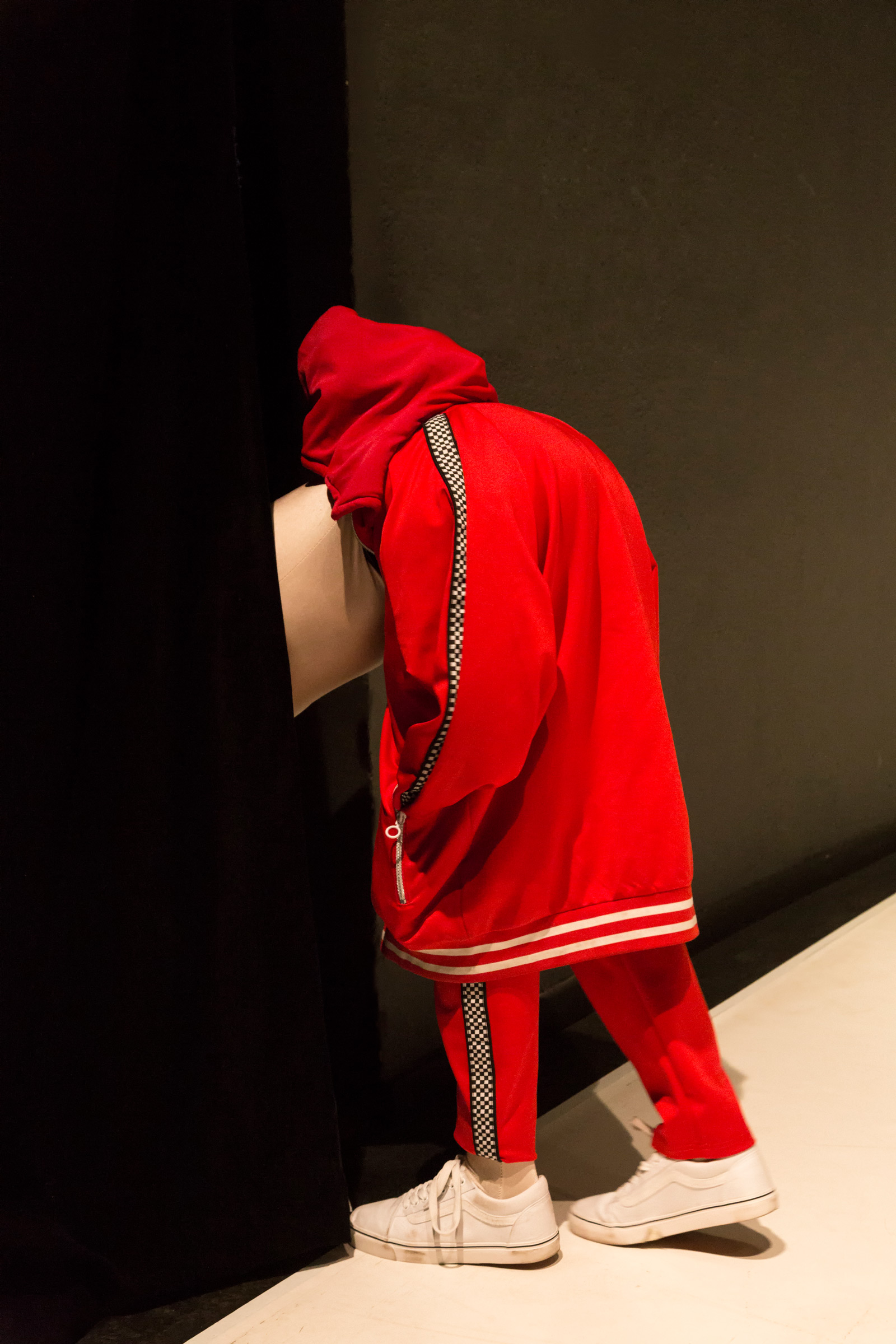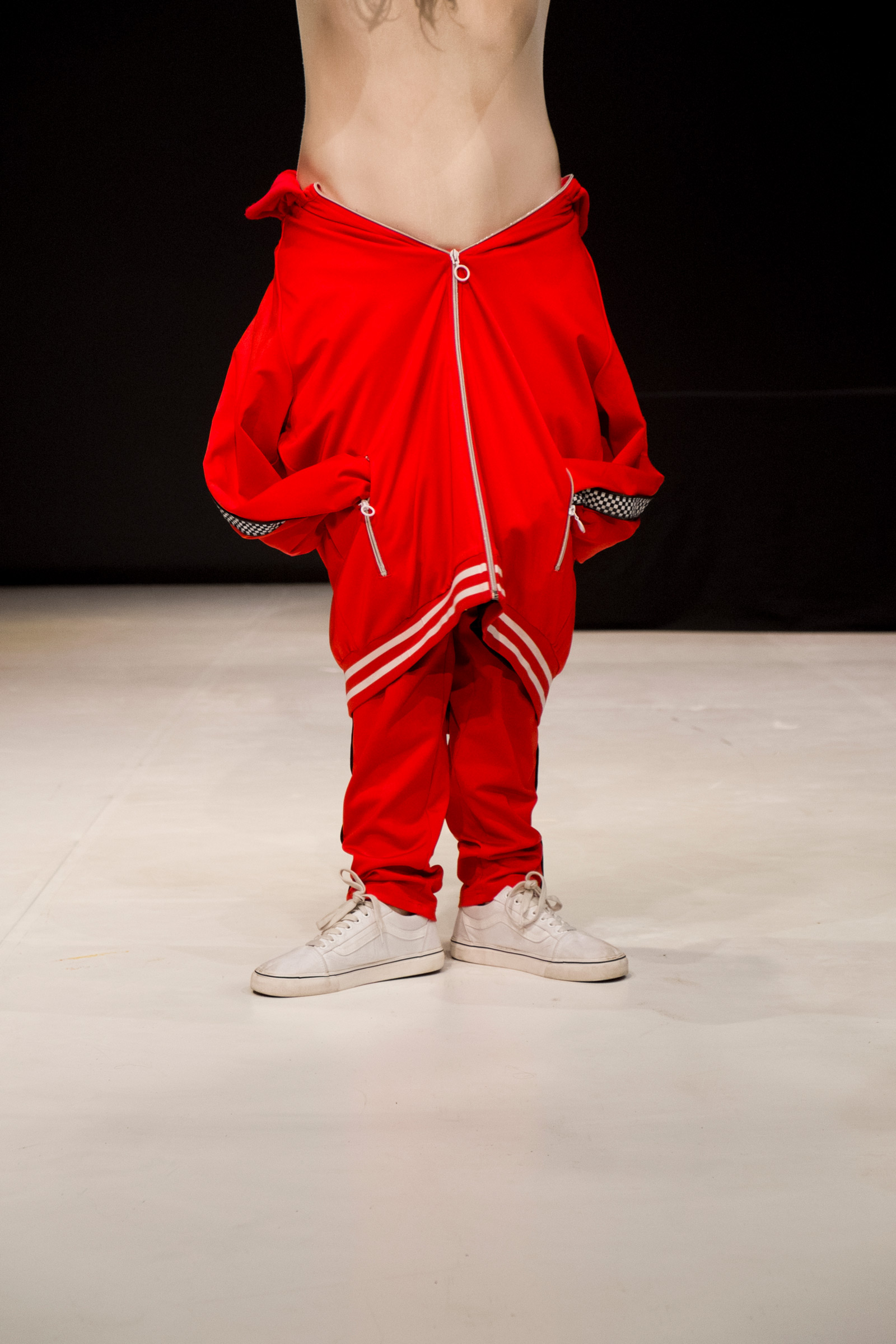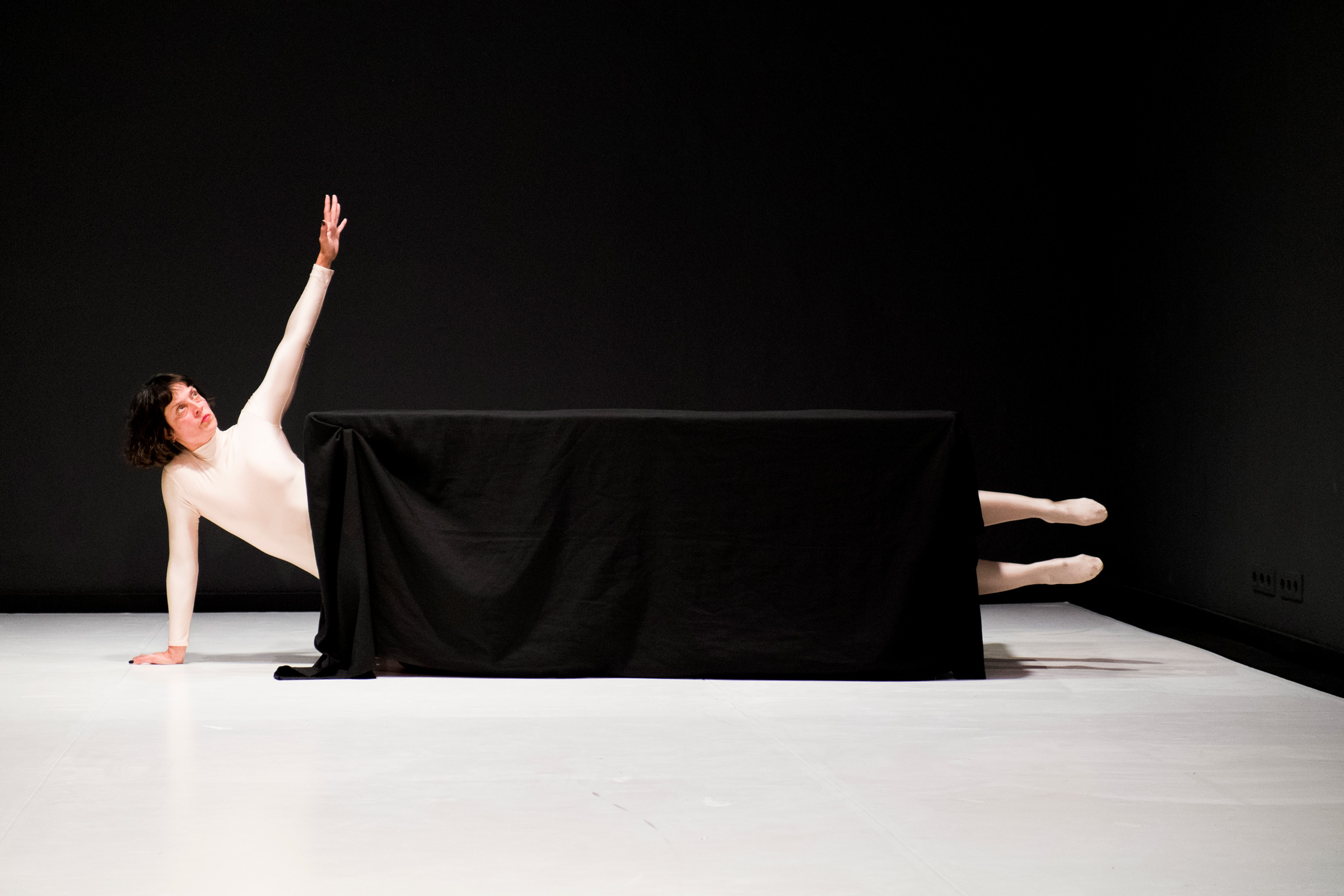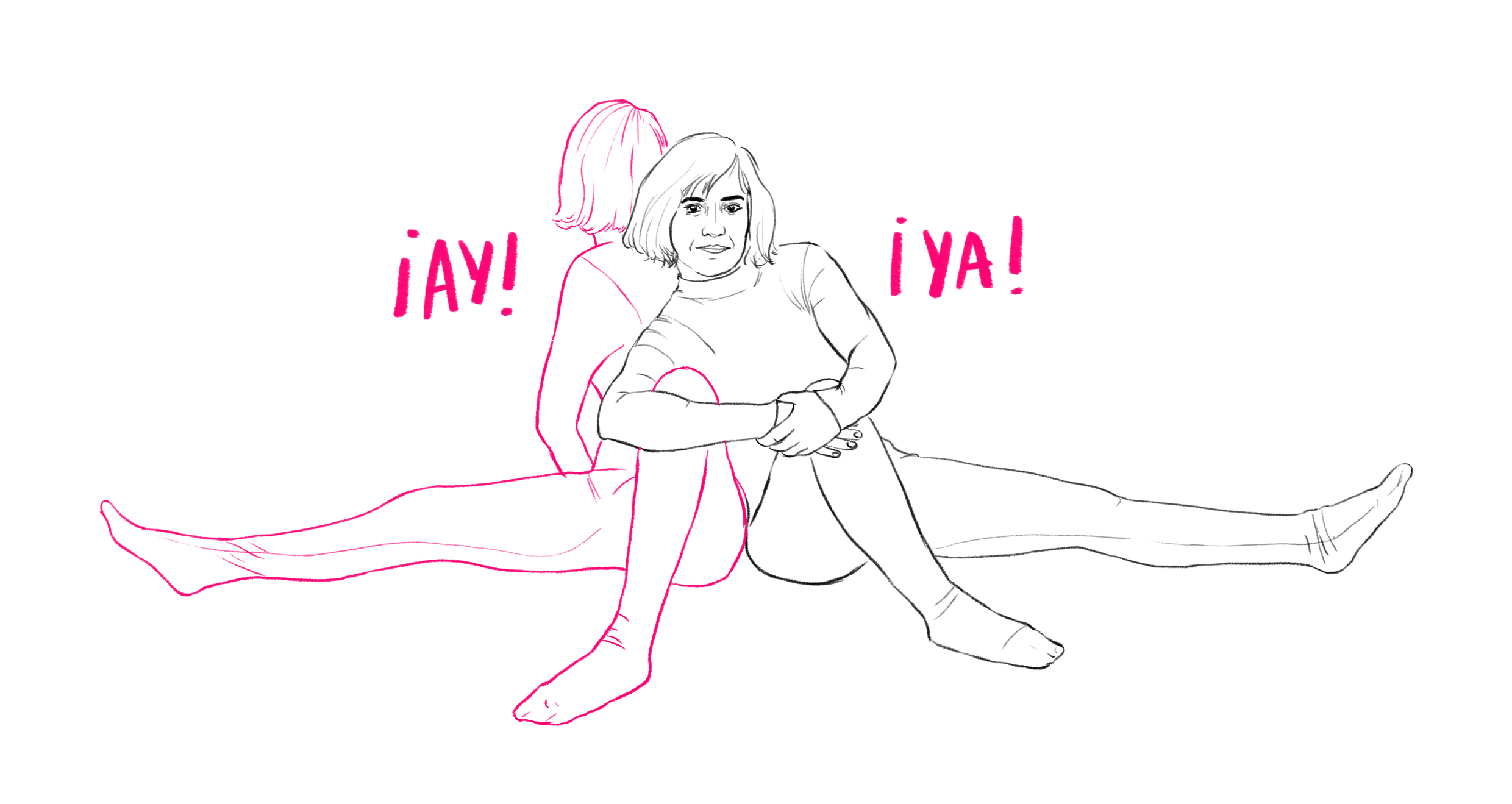¡AY! ¡YA! is an illusion that leads us to perceive reality in different ways suggested by the imagination or caused by the deception of the sense of sight. An effect that shows that our eyes are not video cameras that record everything that happens, but that our brain interprets and reprocesses the information provided by our senses.
¡AY! ¡YA! is an exercise on the gaze. That illusion that occurs when the image before us is transformed into another, multiplies or takes impossible forms. Bodies with various limbs, incomplete, transformable and moldable. A performative dance piece designed for all audiences, why not!
Original idea: Macarena Recuerda Shepherd.
Performers: Sofía Asencio y Macarena Recuerda.
Creation: Idurre Azkue, Sofía Asencio, Alberto de la Hoz y Macarena Recuerda Shepherd.
Music: Alberto de la Hoz.
Costumes: H-intercalada.
Lighting: Conrado Parodi.
Illustrations: Josunene.
Photographer: Tristán Pérez-Martín.
Collaborations: Antic Teatre, Gobierno Vasco, Festival Grec y Festival BAD, El Graner, Sala Baratza, La Fundición Bilbao e Histeriak.
Concept: Macarena Recuerda Shepherd
Performers: Sofía Asencio and Macarena Recuerda
Created by: Idurre Azkue, Sofía Asencio, Alberto de la Hoz y Macarena Recuerda Shepherd.
Soundtrack: Alberto de la Hoz
Costume: H-intercalada
Lighting: Conrado Parodi
Illustrations: Josunene
Photographs: Tristán Pérez-Martín
An Antic Teatre production
With the support of the Basque Government, Festival Grec and Festival BAD, El Graner, Sala Baratza, La Fundición Bilbao, and Histeriak.

This performance is a beneficiary of the cross-border cooperation project PYRENART, as part of the Interreg V-A España-Francia-Andorra POCTEFA 2014-2020 programme. European Regional Development Fund (ERDF).
Reviews
¡AY! ¡YA! de Macarena Recuerda Shepherd
Toni Rumbau. May 6, 2019
Antic Teatre’s production, performed by Macarena Recuerda Shepherd (who also created the piece) and Idurre Azkue, impressed at the Fira by presenting the audience with a constant exercise in double and ambiguous perception. It’s easy to say, but achieving this duality of perspective is one of the challenges that good puppet theater is always seeking to meet, not expressly (although this has happened from time to time) but unconsciously, it being one of the qualities that pertain to the language of objects and animated forms: being and not being; life and death; appearance and reality.
We, as people, are and are not what we are; appearances are deceptive and the first view of something always hides another. In this case the two performers of ¡AY! ¡YA! look for this effect in the entanglement of their two bodies, with which they create different shapes that break the automatic molds of our perception. But the most extraordinary aspect of their work is that they do it all without artifice, in full view of the audience, not hiding what they’re doing; that is, with complete self-consciousness, both theirs and that of the spectators, who are tricked without being tricked, as long as they are capable of getting the phenomenon of their own perception.
In order to attain this self-consciousness of vision, the performers create ambiguous forms, play optical illusions by interweaving their bodies, and in the movements of what we can see. And they do it naturally, without any forced theatricality, projecting the intelligent gaze of actors directly facing an audience, unaided by a single word, in silence, but sometimes with a determined resonance that is cut off as suddenly as it began.
The effect is brutal, direct and automatic, and if the audience resists, it’s a natural resistance that people have to not seeing things the way we want to see them, that is, without giving up our prejudices and stereotyping. Macarena Recuerda and Idurre Azkue’s performance was like a burst of clairvoyance, as though the veil that only allows the Fira’s spectators to see puppets and things they’ve seen already was suddenly whipped away. What hides behind the visible face of perception? Are we capable of seeing two things at the same time and maintaining our attention on the very ambiguity of perception?
Dramaturgies. Gymnastics of observation in ¡Ay! ¡Ya! by Macarena Recuerda
Alfonso Becerra. September 29, 2019
¡Ay! ¡Ya! is a delightful show by Cía. Macarena Recuerda Shepherd (Basque Country), performed by Macarena herself and Idurre Azkue, and shown, as previously stated, at the Sala Ártika in Vigo on September 20, 21 and 22, 2019. The playful composition of bodies and wardrobe – hoodies, red sweatpants, and white leggings – are the main elements, although a few chairs, a table, the odd balloon, are included.
The combination of the bodies and the playfulness with the colors of the costumes allows the performers to create fascinating optical illusions, such as extending the dimensions of the human body, or making it smaller; creating surreal characters that look like models from an installation or sculptures from a contemporary art museum.
And the best part is their attitude, their stage presence, holding the positions that create the illusions as long as necessary, looking straight at the audience with complicity and charm. Allowing the image to evolve into unsuspected shapes or very funny situations. In the same way, their transitions and preparations are executed nimbly without ostentation or noise, with an economy and sharpness of movement that makes watching them enjoyable and easy.
The ambiguous and very subtle relationship between the two women that is generated from time to time, depending on the position of the bodies and the figures they create, is also interesting. They range from circus at some points to the sculptural installations in a museum at others, through physical theater or straight-up performance.
¡Ay! ¡Ya! is a fun gymnastic exercise for our gaze. A laugh and a contemplation that extracts us from the usual places we inhabit and connects us to other, not so usual places. And how nice it is to be able, from time to time, to leave those habitual places! And how nice it is to enjoy optical illusions just for fun!
“¡AY! ¡YA!” de Macarena Recuerda Shepherd de La Casa Encendida
Adolfo Simón
¡AY! ¡YA! is an exercise in observing. It’s the optical illusion that occurs when the image in front of us morphs into another, or multiplies, or takes on impossible shapes. Bodies with too many limbs; incomplete bodies; bodies that are changeable and malleable. The sense of humor and simplicity, with which the artist takes on this concept, which lies somewhere between choreography and a gag, is to be admired. For around an hour, we are surprised by every composition or deconstruction of the two performers’ bodies that take place on stage. A contemporary piece that at some points reminds us of the classicism found in certain paintings of another age.
Impossible body, reality and utopia
Xavier Manubens. February 17, 2021
“Perspective might prove to be useful as a key after all, namely in understanding how our senses are cultured to perceive certain privileged modes of representation as more natural, real, objective, or convincing than others, and to relate these effects to the discourses which mediate in what we think we see”.
(Maikee Bleeker, 2008, p.13)
Macarena Recuerda Sheperd is a visual artist and dancer from Seville based in the Basque Country. Macarena Recuerda Sheperd is also the pseudonym of Lídia Zoido. Macarena Recuerda is a master of deception. Stage illusionism functions as a hinge between the different works of the artist, who repeatedly questions the relationship between image and referent to end up overwhelming the viewer. This scenic illusionism (an operation so redundant that it would end up entering the realm of the real) was already a driving force in THAT’S THE STORY OF MY LIFE (2010) or GREENWICH ART SHOW (2012). Both projects are closely linked to the universes of the image, giving the viewer a decisive role in the construction of scenic spaces and times as well as in the elaboration of meanings. Macarena Recuerda inhabits that space between what is seen and what is made to see, the essence of both theater and symbolic thought, perhaps opening a new field of possibilities for the image and the figure. The epigraph ¡AY! YA! it’s a game of mirrored words, onomatopoeias turned into adverbs, big changes in meaning for minimal manipulation. But they are also two voices that, when put together, produce a fissure in the imaginary. It is in this crack where the body of the viewer/reader fits, an active agent according to Macarena Recuerda and who participates in the performative act by bringing together the ends of this crack or on the contrary, separating and distancing more if there is any possibility of meaning between the real and the imaginary.
Two women on stage with double costumes, a black cloth and a table play at impossible bodies. One of the bodies draws an eye in his hand. With the same hand, he covers his real eye and observes, in half, another bent body that pretends to be straight. These mirages circulate on stage uninterruptedly, in a sequence of twelve visual poems that recall the logic of the gaze and the sense. This is a piece that if we saw it with a false eye, we would see it better. Traditionally, perspective seeks to deceive the human eye through a representation that is truer because the greater its lie (one of the most perverse operations of the Modern Age). The lower gallery of the Palazzo Ducale in Venice, for example, presents variations in the thickness of the columns thus controlling the viewer’s gaze (from a unique point of view, like in the theater) and offers the illusion of an ordered architecture. This domain of reason in the purely perceptive is deactivated here through transversal bodies, which orient and disorient the same image they manufacture. This non-linear perspective no longer promises the representation of reality, but instead embraces deformation as the governing principle of the image. The difference between the distorted Venetian colonnade and the body that is transfigured on stage is that the first tries by all means to order the world in order to understand it better, while the second blurs it and makes it impossible because perhaps we have already exhausted any possibility of location.
The impossible body has the moral obligation to be able to become, at any moment, a possible body. It is the bodies that manufacture and deconstruct their own image that allow the exercise of illusion, since we cannot be illusioned by something we already have. So for a few seconds these impossible bodies will be part of reality, a radical and urgent disbelief. This is how Macarena Recuerda presents it, which inhabits the space of construction and destruction of the image, highlighting the device that dances between two bodies, the one it executes on stage and the one that manifests itself in the viewer’s imagination. It is in that going and coming where small units of meaning appear, like those curtains that the Greek Parrasi once painted and that deceived Zeuxis when he tried to run them. This fictitious relationship with the object-body proposes a lie that becomes true, and an observer/reader who assumes that fiction as part of his identity. AY! YA! circulates around the trompe l’oeil turning the fictional into an exercise in ultra-reality, since there is nothing more true than a lie in a theater.
Shows
Performances on August 28-29. Internationale Tanzmesse, Düsseldorf (Germany)
Performances on January 13-14. Festival GO GO GO 2023. Le Grütli, Geneva (Switzerland)
Performances on May 19. La Mutant, Valencia (Spain)
Performances on July 6. Theater Municipal, Benicassim (Spain)
Performance on August 15. The Train of Theater Festival, Jerusalem (Israel)
Performances on October 7-8. FIT Festival, Lugano (Suiza)
School performances and workshops on January 18-19. El Graner (Barcelona)
Performances on March 26-27. Réplika Teatro (Madrid)
School performances on April 26-29 (2 rounds per day). L’Artesà (El Prat de Llobregat)
School workshops on April 5-8 and 18-22. L’Artesá (El Prat de Llobregat)
Performances on February 22-28. Mercat de les flors (Barcelona)
Workshops on May 12 as part of the Tandem Schools program (Girona)
Performance on May 13 at Teatro Salt within the Escuelas Tándem program (Girona)
Performance on July 3. Festival “Ara i aquí” in Calafell (Tarragona)
Performance on September 24. Centro Párraga (Murcia)
Performance on October 24. Bucles Festival (Valencia)
Performance on February 9. Theatre Fair Fetén (Gijón)
Performances on February 17-21. La Caldera (Barcelona)
Performances on February 25-27, 5 matinal shows. La Caldera (Barcelona)
Workshop on March 7. Dantzerti (Bilbao)
Performance on August 5. The train theater Festival (Jerusalem) Israel
Performance on September 18. Diputación (Málaga)
Performance on September 24. Teatre Principal (Olot)
Performances on November 9-10. MA Scene (Montbéliard cedex), France
Performance on December 4. La Lechera (Cádiz)
Performances on December 26-27. Azkuna Zentroa (Bilbao)
Performances on February 15-17. Ensalle/ Isto Ferve Festival (Vigo)
Workshop on February 19-26. 3rd ESO of the ikastola Azkue organized by Arropaineko Arragua (Lekeitio)
Performance on February 28. Arropaineko Arragua (Lekeitio)
Performance on March 20. El Contenedor Cultural (Málaga)
Performances on March 14-17. Antic Teatre (BCN)
Performances on April 6-7. La Fundición (Bilbao)
Performances on May 3-4. Fira Titelles (Lleida)
Performances on May 18-19. Festival Encuentros Teatro Victoria (Tenerife)
Performance on June 14. Festival Teatractions Espacio Tangente (Burgos)
Performance on September 20-22. Sala Artika (Vigo)
Performance on October 18. Lizeo (Gernika)
Performances on October 30-31. Casa Encendida (Madrid)
Performance on November 17. IF Festival Sala Hiroshima (Barcelona)
Performance on November 30 at 6:00 p.m. and 8:00 p.m. and December 1 at 8:00 p.m. Miriñaque (Santander)
Performances on December 6-8. La Estación (Zaragoza)
Performances on December 13-14. Avanti (Córdoba)
Performances on December 19-21. Ultramar (Valencia)
Premiered on July 4 at 8pm. Antic Theater, Festival Grec (BCN)
Performances on July 5-6 at 8pm. Antic Teater, Festival Grec (BCN)
Performances on October 25 at The Foundry Festival ADB (Bilbao)
Family workshop and performance on October 27. Tabakalera (Donosti)
Performances on November 9-11. ETN (Pamplona)
Children’s workshop on December 22-23. Casa Encendida (Madrid)
